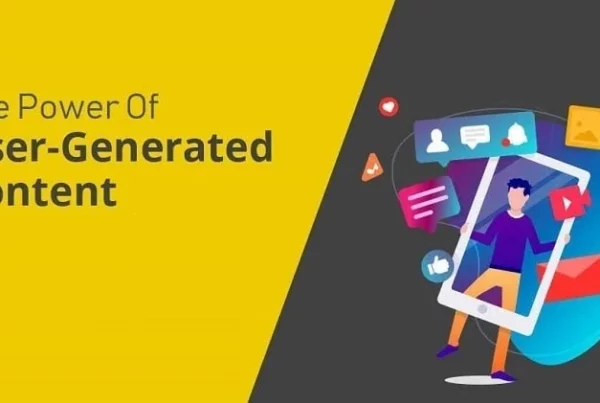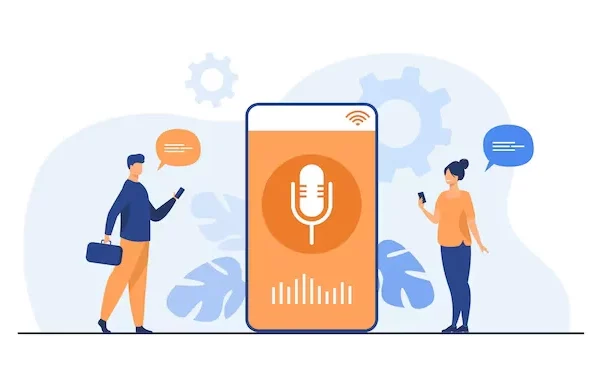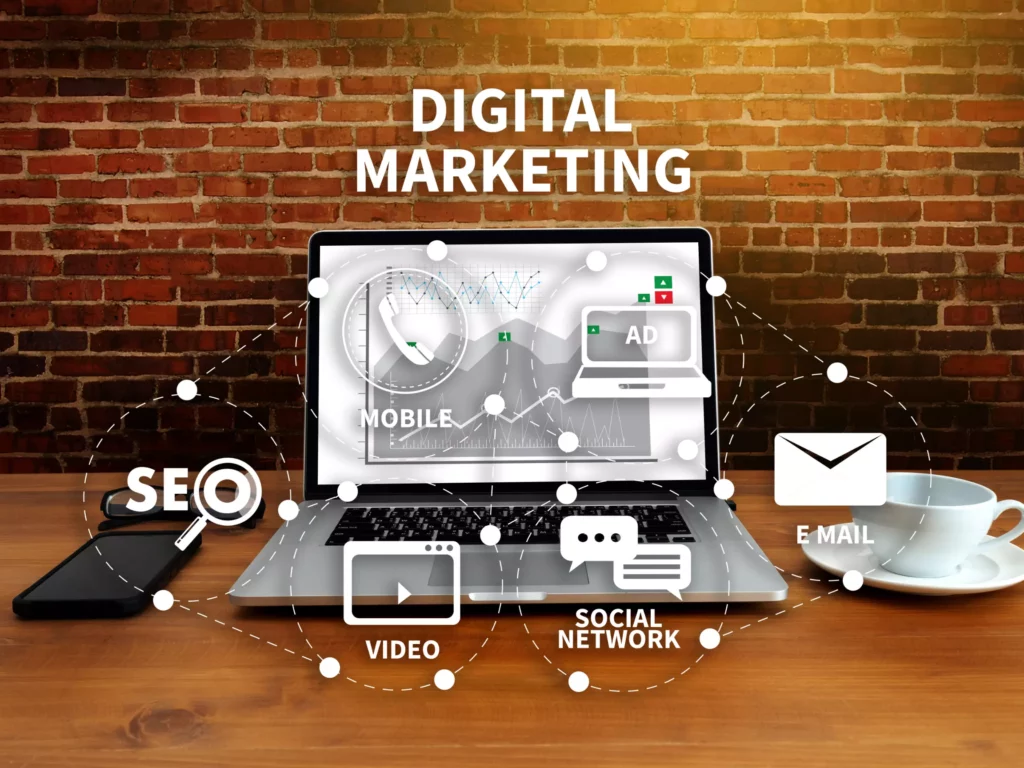
Digital Marketing: Revolutionizing the Marketing Landscape
In today’s digital age, businesses are no longer limited to traditional marketing techniques such as print advertisements, billboards, and TV commercials. The introduction of the internet and advancements in technology have paved the way for a new type of marketing known as digital marketing. In this article we will answer all your questions related to DIGITAL MARKETING
What is Digital Marketing?
Digital marketing refers to the use of digital channels and platforms such as search engines, social media, email, and websites to promote products or services. It encompasses a wide range of tactics and strategies designed to reach target audiences where they are spending most of their time – online.
Why is Digital Marketing Important?
In today’s fast-paced digital world, consumers are bombarded with countless messages and advertisements every day. With digital marketing, businesses can differentiate themselves from the competition by creating personalized, relevant, and engaging content that resonates with their target audience.
Additionally, digital marketing offers a level of accessibility, scalability, and measurable results that traditional marketing methods simply cannot match. Businesses can reach millions of potential customers with just a few clicks, and track the success of their campaigns in real time using analytics and metrics.
The Purpose and Scope of Digital Marketing
In the modern era, digital marketing has become an essential part of any successful business strategy. The rapid advancements in technology have drastically changed the way consumers interact with businesses and the way businesses reach their target audience. With digital marketing, businesses can reach their target audience with more accuracy and efficiency, and drive results in a fast-paced, competitive digital landscape.
Purpose of Digital Marketing
The main purpose of digital marketing is to reach, engage, and convert potential customers into paying customers. It is designed to provide businesses with a platform to communicate with their target audience in a personalized and relevant way and to drive customer acquisition and brand awareness. Digital marketing allows businesses to target their audience with more precision, reach more people, and ultimately, generate more sales.
Scope of Digital Marketing
The scope of digital marketing is vast and encompasses a wide range of tactics and strategies, including search engine optimization (SEO), pay-per-click advertising (PPC), social media marketing, email marketing, influencer marketing, and content marketing. Each component offers unique benefits and opportunities to reach target audiences, and businesses can choose to focus on one or several components depending on their goals and budget.
Digital marketing also has the ability to reach target audiences across multiple devices and platforms, including desktop computers, smartphones, tablets, and smartwatches. This level of accessibility and scalability is a major advantage for businesses, as it allows them to reach millions of potential customers with just a few clicks.
Additionally, digital marketing offers businesses the ability to track the success of their campaigns in real time using analytics and metrics. This level of transparency and accountability is not possible with traditional marketing methods, and it allows businesses to make data-driven decisions to improve their campaigns and drive better results.
Overview of digital marketing
Digital marketing involves utilizing digital mediums like search engines, social media, email, and websites to advertise products or services. It is a rapidly developing area that has become an important aspect of a successful business plan in today’s digital world.
The main goal of digital marketing is to reach, engage, and convert potential customers into paying customers. By leveraging the power of digital channels, businesses can reach their target audience with more precision and efficiency, and drive results in a fast-paced, competitive digital landscape.
As technology continues to evolve and consumers’ online habits change, digital marketing will continue to play a significant role in the business landscape. By embracing the power of digital marketing, businesses can reach their target audience, drive engagement, and generate measurable results.
Types of digital marketing
1. Search engine optimization (SEO)

Search Engine Optimization (SEO) is the process of optimizing a website to rank higher in search engine results pages (SERPs) for relevant keywords and phrases. It is a crucial component of digital marketing and a key factor in driving organic traffic to a website.
SEO involves a variety of tactics, including on-page optimization (such as keyword research and optimization, meta tag optimization, and content creation), technical optimization (such as website architecture, mobile responsiveness, and page speed), and off-page optimization (such as link building and local SEO).
The goal of SEO is to increase a website’s visibility in search engine results pages, making it easier for potential customers to find the website and ultimately, increasing the chances of driving conversions.
SEO is a long-term strategy that requires ongoing effort and attention. It is not a one-time task but rather an ongoing process that requires regular attention to stay ahead of the competition and maintain a strong presence in search engine results pages.
By focusing on best practices in SEO, businesses can increase their online visibility, drive organic traffic to their website, and ultimately, drive more sales and conversions. SEO is a cost-effective way to reach target audiences and can provide a significant return on investment for businesses that invest in it over time.
2. Pay-per-click advertising (PPC)
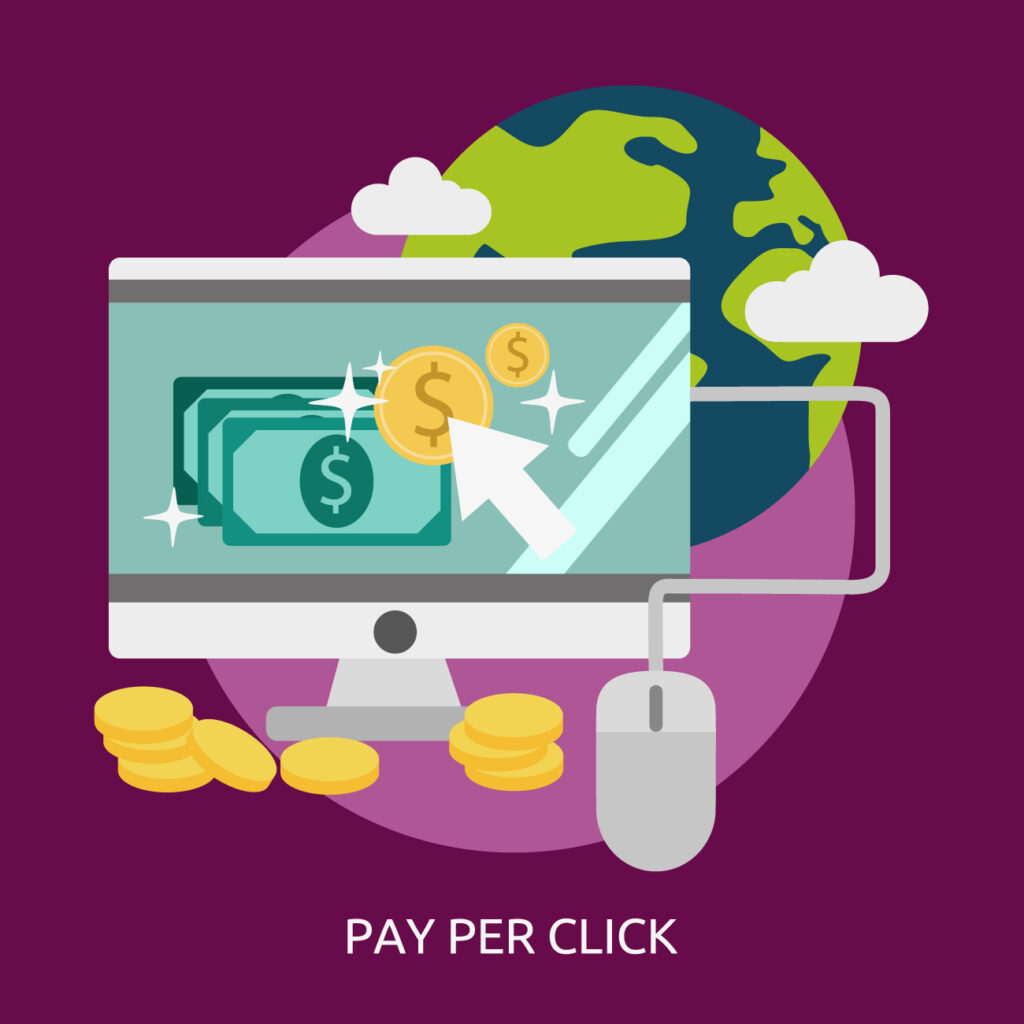
Pay-per-click (PPC) advertising is a form of digital marketing where advertisers pay each time a user clicks on one of their online ads. It is a cost-effective way to drive traffic to a website and reach target audiences quickly.
PPC advertising works by displaying ads on search engine results pages (SERPs) or other websites and platforms, such as social media. Advertisers bid on keywords and phrases related to their products or services, and their ads are displayed when users search for those keywords.
The advantage of PPC advertising is that it offers immediate results and allows businesses to reach their target audience quickly. It also provides a high level of targeting and customization, allowing businesses to reach specific demographics, interests, and locations.
However, PPC advertising can also be competitive and expensive, especially for highly sought-after keywords. It is important for businesses to carefully manage their bids, target their ads effectively, and continually monitor and optimize their campaigns to ensure the best possible return on investment. In conclusion, PPC advertising is a powerful tool that offers businesses the ability to reach their target audience quickly and drive results in a fast-paced, competitive digital landscape. It is an effective way to drive traffic to a website, increase brand awareness, and generate measurable results.
3. Social media marketing

Social media marketing is the process of promoting products or services on social media platforms, such as Facebook, Twitter, Instagram, and LinkedIn. It is a powerful tool for reaching target audiences, building brand awareness, and driving engagement and conversions.
Social media marketing involves creating and sharing content that resonates with the target audience, engaging with followers, and promoting products or services through sponsored posts or advertisements. Businesses can use social media to showcase their brand personality, share industry insights and thought leadership, and build relationships with their target audience.
Social media platforms offer a range of targeting options, allowing businesses to reach specific demographics, interests, and locations. This level of targeting and customization can lead to higher engagement rates and a better return on investment.
In addition, social media provides businesses with the opportunity to receive immediate feedback from their target audience and engage in real-time conversations. This level of interaction and engagement can help businesses build trust and credibility with their target audience, and ultimately, drive conversions. Social media marketing is a cost-effective way to reach target audiences and build relationships with them. It is an important component of a comprehensive digital marketing strategy and can help businesses reach their goals and drive results in a fast-paced, competitive digital landscape.
4. Email marketing

Email marketing is a form of digital marketing that involves sending promotional or informative messages to a list of subscribers via email. It is a cost-effective and targeted way to reach target audiences and drive results.
Email marketing campaigns can include a variety of content, including newsletters, promotional offers, product updates, and event invitations. The goal of email marketing is to build relationships with subscribers, increase brand awareness, and drive conversions.
To be effective, email marketing requires a targeted list of subscribers and well-crafted messages that resonates with the target audience. Segmenting the email list based on subscriber preferences and behaviors can lead to higher engagement rates and a better return on investment.
Email marketing also provides businesses with valuable data and insights, including open and click-through rates, which can be used to optimize future campaigns and drive better results.
In conclusion, email marketing is a powerful tool for reaching target audiences and driving results. It provides businesses with the ability to build relationships, increase brand awareness, and drive conversions in a cost-effective and targeted way. As part of a comprehensive digital marketing strategy, email marketing can help businesses reach their goals and drive results in today’s fast-paced digital landscape.
5. Affiliate marketing

Affiliate marketing is a performance-based form of digital marketing where affiliates are rewarded for promoting a business’s products or services. Affiliates earn a commission for each sale or lead they generate through their marketing efforts.
Affiliate marketing involves partnering with other websites or online platforms to promote a business’s products or services. The affiliate promotes the business’s products or services through unique links or tracking codes and earns a commission for each sale or lead generated through their efforts.
Affiliate marketing is a cost-effective way to reach target audiences and drive sales. It allows businesses to leverage the reach and influence of other websites or platforms to promote their products or services. It also allows businesses to tap into new audiences and reach target markets they may not have been able to reach on their own.
To be successful, affiliate marketing requires a well-defined strategy, clear terms and conditions, and a strong program that provides affiliates with the resources and support they need to be successful. Businesses must also have a reliable tracking system in place to accurately track and measure the results of their affiliate marketing efforts.
In conclusion, affiliate marketing is a valuable tool for businesses looking to reach target audiences and drive results in a cost-effective and performance-based way. It allows businesses to leverage the reach and influence of other websites and platforms to promote their products or services and reach new audiences. As part of a comprehensive digital marketing strategy, affiliate marketing can help businesses reach their goals and drive results in today’s fast-paced digital landscape.
6. Influencer marketing

Influencer marketing is a form of digital marketing that leverages the reach and influence of influencers to promote products or services to their followers. Influencers are individuals who have built a large following on social media or other online platforms, and have a significant impact on their followers’ opinions and purchasing decisions.
Influencer marketing involves partnering with influencers to promote a business’s products or services. This can be done through sponsored posts, product reviews, or other forms of content that feature the business’s products or services. The goal of influencer marketing is to reach target audiences and drive results through the credibility and influence of the influencer.
To be successful, influencer marketing requires a well-defined strategy, clear terms and conditions, and a strong influencer selection process. Businesses must also have a clear understanding of their target audience and the type of influencer who will best resonate with them.
Influencer marketing provides businesses with the ability to reach target audiences in a cost-effective and targeted way. It also provides valuable data and insights, such as engagement rates and returns on investment, which can be used to optimize future campaigns and drive better results.
7. Content marketing

Content marketing is a form of digital marketing that focuses on creating and sharing valuable, relevant, and consistent content to attract and retain a clearly-defined target audience — and ultimately, to drive profitable customer action.
The goal of content marketing is to educate and inform target audiences about a business’s products or services and build trust and credibility. By providing valuable information, businesses can establish themselves as experts in their field and position themselves as trusted source of information.
Content marketing can take many forms, including blog posts, infographics, videos, podcasts, ebooks, and more. The key to successful content marketing is to create content that resonates with target audiences and provides value.
To be effective, content marketing requires a well-defined strategy, a clear understanding of target audiences, and a commitment to consistently producing high-quality content. Businesses must also have a plan for distributing and promoting their content to reach target audiences and drive results.
Key components of a digital marketing strategy
A digital marketing strategy is the foundation for success in today’s fast-paced online landscape. To drive results, businesses must have a clear understanding of the key components of a successful digital marketing strategy. These components include identifying target audiences, setting clear goals and objectives, conducting market research, developing a comprehensive content strategy, leveraging the right channels and tactics, measuring and analyzing results, and continuously optimizing the strategy for better performance. The combination of these components allows businesses to reach target audiences and drive results in a cost-effective and targeted way. By having a well-defined digital marketing strategy in place, businesses can stay ahead of the competition and achieve their marketing goals. Here we have given a few extremely important key components of digital marketing strategy:
1. Target audience

Target audience refers to the specific group of individuals that a business aims to reach and communicate with through its marketing efforts. In digital marketing, understanding the target audience is a critical component of a successful marketing strategy as it allows businesses to tailor their messaging and tactics to reach the people who are most likely to be interested in their products or services.
To identify a target audience, businesses should consider factors such as age, gender, income, location, interests, behaviors, and more. This information can be gathered through market research, surveys, customer data, and other sources. By understanding the target audience, businesses can create messaging and content that resonates with them, making their marketing efforts more effective and impactful. Having a clear understanding of the target audience also helps businesses prioritize their marketing efforts and allocate resources to the channels and tactics that are most likely to reach their target audience. For example, if the target audience consists of young adults, social media platforms like Instagram or TikTok might be the most effective channels for reaching them, while older audiences may be more likely to respond to email or direct mail campaigns.
2. Competitor analysis
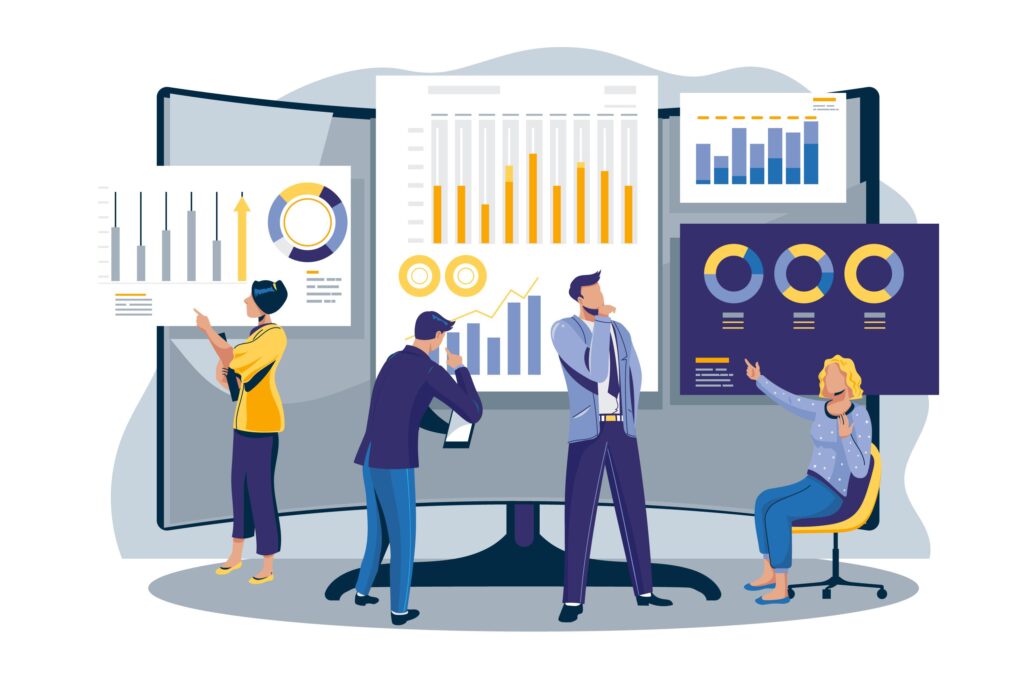
Competitor analysis is the process of evaluating and understanding the strengths and weaknesses of businesses in the same or similar industry. In digital marketing, competitor analysis is an important component of a comprehensive marketing strategy as it provides valuable insights into the competitive landscape and helps businesses identify opportunities to differentiate themselves and stand out in the market.
To conduct a competitor analysis, businesses should gather information about their competitors’ products or services, marketing strategies, target audience, brand reputation, and more. This information can be obtained through a variety of sources, such as the competitors’ websites, social media profiles, and customer reviews.
Once the information is collected, businesses can use it to identify the strengths and weaknesses of their competitors, as well as opportunities to differentiate themselves and reach target audiences in new and unique ways. For example, if a competitor is strong in social media marketing, a business might focus on developing a robust email marketing strategy to reach target audiences. Competitor analysis also provides valuable insights into industry trends and emerging technologies, helping businesses stay ahead of the competition and maintain their competitive edge. By regularly conducting competitor analysis, businesses can stay informed about the competitive landscape and adjust their marketing strategies as needed to remain competitive and achieve their marketing goals.
3. Key performance indicators (KPIs)

Key Performance Indicators (KPIs) are metrics that are used to measure the success of a digital marketing campaign or strategy. KPIs help businesses track the performance of their marketing efforts, understand what’s working, and identify areas for improvement. By regularly monitoring KPIs, businesses can make data-driven decisions to optimize their marketing strategies for better results.
There are many different KPIs that businesses can use to measure the success of their digital marketing efforts, including:
- Website traffic: measures the number of visitors to a website and the sources of that traffic (e.g. search engines, social media, etc.).
- Conversion rate: measures the percentage of website visitors who take a desired action, such as making a purchase, filling out a form, or downloading content.
- Bounce rate: measures the percentage of visitors who leave a website after visiting only one page.
- Lead generation: measures the number of leads generated through a digital marketing campaign.
- Return on investment (ROI): measures the financial return generated from a digital marketing campaign, relative to the amount of money spent.
- Social media engagement: measures the level of engagement with a brand on social media, such as likes, comments, shares, etc.
- Email open and click-through rates: measures the effectiveness of an email marketing campaign by tracking the number of emails opened and the number of clicks on links within the email.
Choosing the right KPIs for a digital marketing campaign or strategy depends on the goals and objectives of the business. For example, if a business is focused on generating leads, lead generation, and conversion rate would be key KPIs to track. On the other hand, if a business is focused on building brand awareness, website traffic, and social media engagement would be more important KPIs to track.
4. Marketing budget
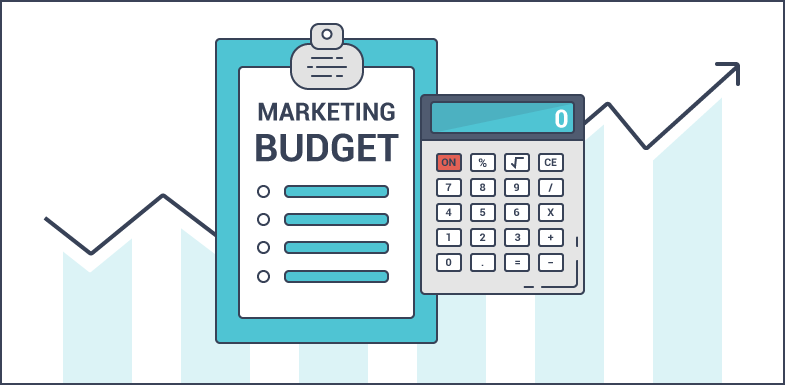
The marketing budget is a critical component of a digital marketing strategy, as it determines the amount of resources that a business has available to allocate toward its marketing efforts. A well-crafted marketing budget will help businesses prioritize their marketing initiatives, allocate resources effectively, and measure the success of their marketing campaigns.
When developing a marketing budget, businesses should consider a variety of factors, such as the size of their target audience, the cost of acquiring new customers, and the cost of retaining existing customers. It is also important to consider the overall goals and objectives of the marketing strategy, as well as the expected return on investment (ROI) for each marketing initiative.
It is important to note that a marketing budget should be flexible and able to adjust to changes in the market, as well as the success of specific marketing initiatives. For example, if a marketing campaign is performing particularly well, businesses may choose to allocate additional resources toward that initiative to maximize its impact.
Integration of digital marketing with traditional marketing
Integration of digital marketing with traditional marketing refers to the integration of digital marketing techniques and technologies into a company’s existing marketing mix, which often includes traditional marketing tactics such as print ads, television commercials, and direct mail. The goal of this integration is to create a comprehensive, cohesive, and effective marketing strategy that leverages the strengths of both traditional and digital marketing to reach and engage customers in the most effective way possible.
Digital marketing has completely changed the way businesses market themselves, and it has become increasingly important for companies to incorporate digital marketing into their overall marketing strategies. By combining traditional marketing tactics with digital marketing, businesses can reach their target audience through multiple channels, allowing them to build a stronger brand presence and connect with customers in a more meaningful way.
Integrating digital marketing with traditional marketing can help businesses to:
- Reach a wider audience: By using a combination of traditional and digital marketing, businesses can reach customers through multiple channels, increasing the chances of capturing their attention and making a lasting impression.
- Enhance brand recognition: Integrating digital marketing with traditional marketing helps businesses to reinforce their brand across multiple channels, creating a consistent and recognizable brand presence.
- Improve customer engagement: By using digital marketing channels to interact with customers, businesses can enhance their engagement with customers and build deeper relationships.
- Measure marketing effectiveness: Integrating digital marketing with traditional marketing enables businesses to track and measure the effectiveness of their marketing efforts, providing valuable insights into what is working and what is not.
In conclusion, the integration of digital marketing with traditional marketing is a strategic approach that can help businesses to reach a wider audience, enhance brand recognition, improve customer engagement, and measure marketing effectiveness. By leveraging the strengths of both traditional and digital marketing, businesses can create a comprehensive and effective marketing strategy that will help them succeed in today’s competitive marketplace.
Search engine optimization(SEO)
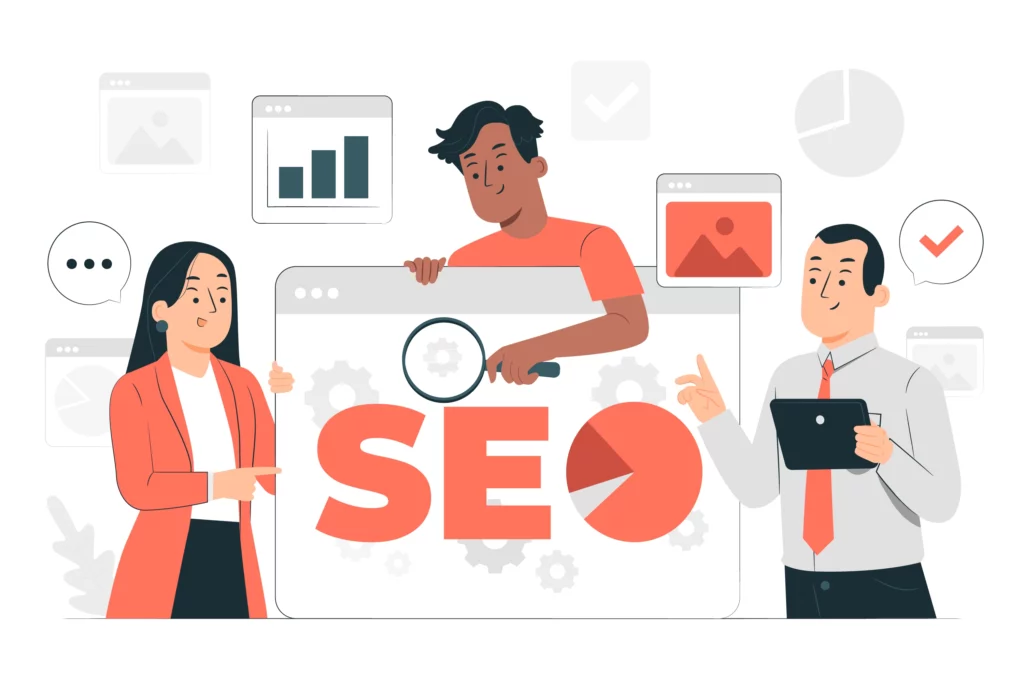
You must be having many questions in your mind, We will answer all your questions related to SEO
What is SEO?
Search Engine Optimization (SEO) is the process of optimizing a website to rank higher in search engine results pages (SERPs) for relevant keywords and phrases. It is a crucial component of digital marketing and a key factor in driving organic traffic to a website.
SEO involves a variety of tactics, including on-page optimization (such as keyword research and optimization, meta tag optimization, and content creation), technical optimization (such as website architecture, mobile responsiveness, and page speed), and off-page optimization (such as link building and local SEO).
What are the Benefits of SEO?
There are numerous benefits to implementing a strong SEO strategy, including increased website traffic, improved brand visibility and credibility, higher search engine rankings, and a better user experience for website visitors. A well-executed SEO strategy can also help businesses to attract more qualified leads and improve conversions, leading to higher ROI and long-term success.
What are the Key components of an SEO strategy?
The key components of an effective SEO strategy include keyword research, on-page optimization, backlinking, content creation, and technical optimization. Keyword research is the process of identifying the keywords and phrases that your target audience is searching for, which helps to inform your content strategy. On-page optimization involves optimizing website elements such as titles, descriptions, and content to improve the relevance and quality of the website for search engines. Backlinking involves building high-quality links from other websites to your website, which helps to establish authority and improve rankings. Content creation is the process of creating high-quality, relevant, and engaging content that provides value to users and aligns with your SEO goals. Technical optimization involves making technical changes to your website to improve its overall performance and ensure it is crawlable and indexable by search engines.
Now we will try to answer your questions about key components of SEO strategy
1. KEYWORD RESEARCH
Keyword research is a crucial component of an SEO strategy, as it helps to identify the keywords and phrases that your target audience is searching for. By understanding what your customers are looking for, you can create content and optimize your website to rank higher in search engine results pages (SERPs) for those keywords. Keyword research tools can help you to identify high-traffic keywords, determine keyword competition, and evaluate the potential impact of different keywords on your search rankings.
2. ON-PAGE OPTIMIZATION
On-page optimization refers to the techniques used to optimize individual pages on a website in order to improve their relevance and visibility in search engine results. This includes optimizing elements such as titles, meta descriptions, header tags, images, and content, to ensure that your pages are as search-engine-friendly as possible. On-page optimization is important for both improving search rankings and providing a positive user experience for website visitors.
3. OFF-PAGE OPTIMIZATION
Off-page optimization refers to the techniques used to improve the visibility of a website outside of its own pages, such as through the use of backlinks, social media presence, and brand mentions. This includes activities such as link building, which involves acquiring links from other websites that point back to your website, as well as participating in online communities and building a strong social media presence. Off-page optimization helps to improve the authority and credibility of your website, which can have a significant impact on your search engine rankings.
4. LINK BUILDING
Link building is a crucial component of off-page optimization, and it involves acquiring links from other websites that point back to your website. These links help to improve the visibility and credibility of your website, and they are also a key factor in determining search engine rankings. To be effective, link building should focus on acquiring high-quality, relevant links from reputable sources, rather than relying on tactics such as link buying or link spamming, which can harm your search rankings. Good link-building practices include creating high-quality content, participating in online communities, and reaching out to websites in your niche to request a link.
Now let’s see some of your questions
What are the Common SEO techniques and tools?
- Keyword research: Keyword research tools such as Google Keyword Planner, SEMrush, and Ahrefs are used to identify the keywords and phrases that your target audience is searching for, and to evaluate the potential impact of those keywords on your search engine rankings.
- On-page optimization: On-page optimization techniques include optimizing elements such as titles, meta descriptions, header tags, images, and content, to ensure that your pages are as search-engine-friendly as possible. On-page optimization tools, such as Yoast SEO, can help you to analyze your pages and make recommendations for improvement.
- Content creation: Creating high-quality, keyword-optimized content that provides value to your target audience is an important aspect of SEO. Content creation tools, such as Google Docs, can help you to create and organize your content efficiently.
- Link building: Link-building tools, such as Ahrefs and SEMrush, can help you to analyze your backlink profile and identify opportunities for acquiring high-quality, relevant links.
- Technical SEO: Technical SEO involves optimizing the underlying code and structure of your website to ensure that it is as search engine-friendly as possible. Technical SEO tools, such as Google Search Console and Screaming Frog, can help you to identify and resolve technical issues that may be affecting your search engine rankings.
- Analytics and tracking: Analytics and tracking tools, such as Google Analytics, can help you to track your website traffic, monitor your search engine rankings, and evaluate the effectiveness of your SEO efforts.
It’s important to note that while these tools can be helpful in improving your SEO, they should be used in conjunction with a comprehensive SEO strategy, and not relied upon as a sole solution. It’s also important to stay up-to-date with the latest best practices and guidelines from search engines, as search algorithms and ranking factors are constantly evolving.
Pay-per-click advertising (PPC)
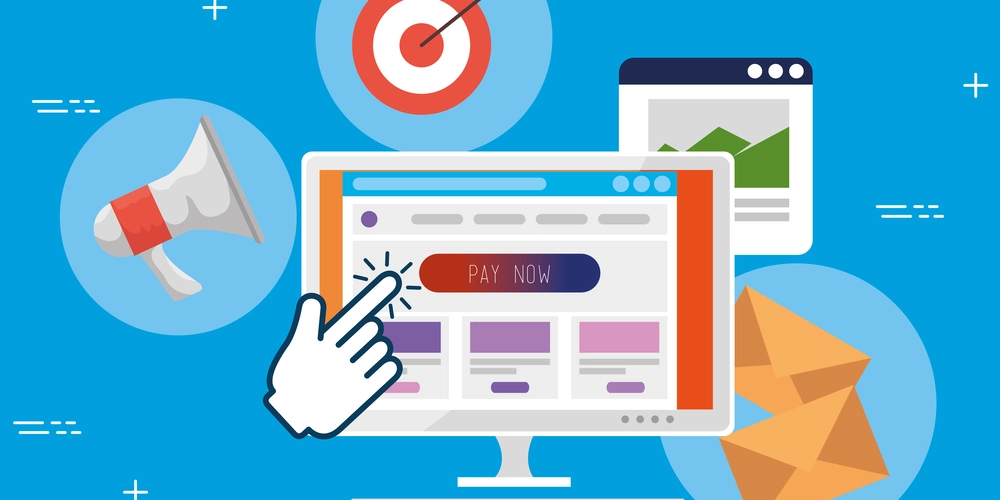
Now we will try to answer all your questions related to PPC
What is PPC?
Pay-per-click advertising (PPC) is a type of digital advertising in which advertisers pay each time a user clicks on one of their ads. PPC allows advertisers to target specific audience segments, geographic locations, and even specific times of day, making it a highly effective and efficient way to drive traffic and conversions to a website.
What are the Benefits of PPC?
Benefits of PPC: PPC offers many benefits, including:
- Quick results: Unlike SEO, which can take months or even years to see results, PPC can deliver immediate results, as ads can start appearing within a matter of hours or days after launch.
- Targeted audience: PPC allows you to target specific audience segments based on factors such as age, location, and interests, ensuring that your ads reach the right people at the right time.
- Cost control: PPC offers complete control over your advertising budget, as you only pay when someone clicks on your ad, and you can set a daily or monthly budget to ensure that you stay within your advertising budget.
What are the Key components of a PPC strategy?
- Keyword research: Keyword research is critical in PPC, as it helps you to identify the keywords and phrases that your target audience is searching for, and to evaluate the potential impact of those keywords on your search engine rankings.
- Ad creation and optimization: Ad creation and optimization involve crafting compelling ads that effectively communicate your message, and optimizing those ads for maximum impact and relevance.
- Landing page optimization: Landing page optimization involves ensuring that your landing pages are optimized for maximum conversion and that they effectively communicate the value of your products or services.
- Conversion tracking: Conversion tracking involves tracking the performance of your PPC campaigns, and evaluating the effectiveness of your PPC efforts in terms of conversions, sales, and revenue.
What are the Common PPC platforms and tools?
The most popular PPC platforms and tools include the following:
- Google Ads: Google Ads is the largest and most popular PPC platform, allowing advertisers to target users on the world’s largest search engine.
- Microsoft Advertising: Microsoft Advertising is another popular PPC platform, allowing advertisers to target users on Bing and other Microsoft properties.
- Facebook Ads: Facebook Ads allows advertisers to target users based on factors such as interests, behaviors, and location, making it an effective platform for reaching specific audience segments.
- AdEspresso: AdEspresso is a powerful PPC optimization tool that allows advertisers to optimize their PPC campaigns in real-time, and to monitor performance and results in real time.
These are just a few examples of the many PPC platforms and tools that are available. The right platform and tools will depend on your specific advertising needs and goals, and it’s important to carefully evaluate the options and select the tools that are right for you. Still got more questions, then you can directly reach us. We will surely sort out your questions and queries.
Social Media Marketing

Now you must be having many questions related to social media marketing. Just stay with us and scroll down slowly, all your questions will be answered
What is social media marketing?
Social media marketing is a form of digital marketing that involves promoting brands, products, or services through social media platforms such as Facebook, Twitter, Instagram, LinkedIn, etc. The goal of social media marketing is to reach a large audience, engage with them, and ultimately drive conversions and sales. This is achieved by creating and sharing relevant content, participating in online conversations, and running targeted advertisements. Social media marketing also provides an opportunity for businesses to build their brand and reputation, foster customer loyalty, and gather valuable customer insights.
What are the Benefits of social media marketing?
The main benefits of social media marketing include increased brand exposure, higher engagement with the target audience, improved customer loyalty, and opportunities for customer insights and feedback. Additionally, social media marketing provides a cost-effective way for businesses to reach a large and diverse audience, compared to traditional marketing methods.
What are the Key components of a social media marketing strategy?
the social media marketing strategy should include the following components: defining the target audience and goals, choosing the right social media platforms, creating and publishing relevant and engaging content, participating in online conversations and community building, and measuring and analyzing results, and making adjustments as needed. Additionally, a social media marketing strategy should also include a plan for paid advertising, influencer marketing, and content distribution to maximize reach and engagement.
Now you must be having questions on key components of social media marketing strategy. Just bare with us and we will answer all your questions in the following section:
1. Platform selection
Choosing the right social media platforms for your business is a crucial step in developing a social media marketing strategy. This decision should be based on your target audience, business goals, and the type of content you plan to share. Some popular platforms include Facebook, Twitter, Instagram, LinkedIn, and Pinterest.
2. Content creation and curation
Content creation and curation are the backbones of social media marketing. The goal is to create and share content that is relevant, engaging, and valuable to your target audience. This includes creating original content, curating content from other sources, and repurposing existing content.
3. Engagement and interaction
Engagement and interaction with your target audience are essential to building relationships and increasing brand loyalty. This can include responding to comments, answering questions, and participating in online conversations.
4. Analytics and reporting
Analytics and reporting are crucial to measuring the success of your social media marketing efforts. This includes tracking metrics such as reach, engagement, and conversions, and using this data to inform future strategies and make improvements.
What are the Common social media platforms and tools?
Some of the most popular social media platforms and tools include Facebook, Twitter, Instagram, LinkedIn, Hootsuite, Sprout Social, and Buffer. These tools can help you manage your social media presence, schedule and publish content, and track metrics and analytics.
Email Marketing

Questions, questions and so many questions you must be having after reading the term Email marketing. But we can assure you that all your questions will be answered in the following section. We will take questions one by one:
What is email marketing?
Email marketing is the use of electronic mail (email) to promote products or services. It is a form of direct marketing that allows organizations to communicate directly with their target audience and clients. It involves sending out emails to a list of subscribers with the goal of promoting a product, service, or brand.
In email marketing, the sender creates a message and uses an email list to send the message to a large number of recipients. The email message usually contains text, images, and links to a website or landing page where the recipient can learn more about the product or service being offered.
Email marketing campaigns can be automated to send out emails at specific intervals or triggered by a specific action, such as a customer making a purchase. Marketers can also track the success of their campaigns by monitoring open rates, click-through rates, and conversion rates.
In order to effectively reach the target audience and achieve desired results, it is important to segment the email list and personalize the email messages to the recipient. Additionally, it is important to follow email marketing best practices, such as avoiding spam filters and maintaining the privacy of subscribers.
What are the Benefits of email marketing?
Email marketing is a cost-effective and measurable way to reach a targeted audience and promote products or services. Compared to traditional forms of advertising such as print or television advertising, email marketing allows organizations to reach a large audience at a lower cost. The results of email marketing campaigns can also be easily measured and tracked, including open rates, click-through rates, and conversion rates. This data can then be used to optimize future campaigns and improve their effectiveness.
One of the key benefits of email marketing is the ability to target specific segments of the audience. This can include customers who have made a purchase in the past or those who have shown interest in a particular product or service. By sending targeted messages, organizations can increase the relevance of their messages to the recipient, which can result in higher engagement and conversions.
Regular email communication can also help increase brand awareness and build a strong relationship with the target audience. This can lead to increased customer loyalty and retention, as the recipient is already familiar with the brand and has expressed an interest in receiving emails. In addition, email messages can be easily shared with friends and family, which can help expand the reach of the campaign and attract new customers.
Email marketing also allows for the timely delivery of messages. Emails can be scheduled to be sent at specific times, which allows organizations to reach their audience at the right time with the right message. This can result in higher open rates and conversions, as the recipient is more likely to be engaged when they receive the message.
Finally, email marketing allows for personalized messaging, which can help increase engagement and conversions. By using personalization techniques such as using the recipient’s name or targeting them based on their interests, organizations can create a more engaging and relevant message that resonates with the recipient.
What are the Key components of an email marketing strategy?
Key components of an email marketing strategy include building and managing an email list, creating compelling subject lines and content, segmenting the email list for targeted messaging, and measuring and analyzing the results of your email campaigns.
Questions must be arising now on the key components of an email marketing strategy but we will answer all your questions one by one by explaining each topic in the upcoming section below:
1. Email list building?
This involves acquiring and maintaining a list of email addresses from potential and current customers. This is typically done through opt-in forms on a website, at events, or through the purchase of lists. The goal is to build a list of interested and engaged subscribers who have given permission to receive email communications from the business.
2. Segmentation and personalization
This involves dividing the email list into smaller groups based on common characteristics, such as demographics, interests, or behavior. This allows businesses to create and send targeted messages to specific groups within the email list, increasing the relevance and effectiveness of the communications.
3. Email content creation
This involves creating compelling and engaging email content that meets the needs and interests of the target audience. This may include promotional messages, educational content, or transactional messages. The content should be visually appealing, easy to read, and designed to encourage subscribers to take a desired action, such as making a purchase or visiting a website.
4. Testing and optimization
This involves continually testing and refining various aspects of the email campaigns, such as subject lines, content, and call-to-action, to improve the performance and effectiveness of the communications. A/B testing and other methods are used to determine the best practices for increasing open rates, click-through rates, and conversions.
Common email marketing platforms and tools
- Mailchimp – A popular, user-friendly platform that offers a range of features, including email creation and management, automation, and analytics.
- Constant Contact – A feature-rich platform that provides templates, automation, and integrations with other marketing tools.
- AWeber – An affordable platform that offers a range of email marketing tools, including automation, opt-in forms, and reporting.
- Campaign Monitor – A sophisticated platform that offers a range of email design and management tools, including automation and integrations with other marketing tools.
- GetResponse – A comprehensive platform that provides a range of email marketing features, including automation, landing pages, and integrations with other tools.
- Hubspot – An all-in-one marketing platform that offers a range of email marketing features, including automation, personalization, and integrations with other tools.
These are just a few of the many email marketing platforms and tools available. The right choice will depend on the specific needs and goals of the business.
We believe we were able to answer all your questions related to email marketing. In the following section, we will try to answer all your questions related to Affiliate Marketing.
Affiliate Marketing

Recently, affiliate marketing has gained immense popularity as a performance-based marketing strategy. Here, affiliates are incentivized through commissions earned by promoting a merchant’s product or service. In other words, they are rewarded for their efforts in driving sales and generating revenue for the merchant. Whether you’re an established business looking to expand your marketing efforts or a new entrepreneur just starting out, affiliate marketing can be a valuable tool for growing your revenue and reaching new customers. In this article, we’ll dive into the world of affiliate marketing and explore everything you need to know about how it works, how to get started, and how to maximize your success. We will take all the questions one by one and we are sure we will answer most of your questions in the given section
What is affiliate marketing?
Affiliate marketing is a performance-based marketing strategy where a business pays affiliates (individuals or companies) a commission for promoting its products or services. The affiliates earn a commission for each sale or lead generated through their marketing efforts, such as through their website, social media, email marketing, etc. The goal of affiliate marketing is to increase brand exposure and drive sales by leveraging the reach and influence of the affiliates’ audience. It is a mutually beneficial relationship for both the business and the affiliates, as the business gains new customers and the affiliates earn income for their marketing efforts.
What are the Benefits of affiliate marketing?
Affiliate marketing provides numerous benefits for both businesses and affiliates. Some of the key benefits include:
- Cost-effective marketing: Businesses only pay affiliates for the results they generate, so there is no upfront cost for marketing. This makes it a cost-effective way for businesses to reach a wider audience and increase sales.
- Increased reach and exposure: Affiliate marketing allows businesses to reach new audiences through the affiliates’ network of followers, website visitors, and email subscribers.
- Performance-based income: Affiliates earn a commission for each sale or lead they generate, which provides a performance-based income opportunity.
- Increased brand awareness: By leveraging the reach and influence of affiliates, businesses can increase their brand awareness and visibility.
- Access to a wider pool of talent: With affiliate marketing, businesses can tap into a large pool of talented marketers, rather than just relying on in-house marketing teams.
- Improved conversion rates: Affiliate marketing helps businesses improve their conversion rates by providing targeted promotions to a highly engaged audience.
What are the Key components of an affiliate marketing strategy?
What are the key components of an affiliate marketing strategy, and how can these be addressed through questions? Well we will try to answer all your questions below
One of the key considerations is identifying the right type of affiliates or partner selection for your brand and target audience. This can be addressed by asking, “What type of affiliates or partners are the best fit for your brand and target audience?”
1. Partner selection
Affiliate marketing involves choosing the right partners to promote your products or services. The partners can be websites, blogs, influencers, or any other entity that has an audience that aligns with your target market. The selection of the right partners can have a significant impact on the success of your affiliate marketing strategy.
Incentivizing affiliates to promote your products or services effectively is one of the critical questions, which can be addressed by asking, “How will you incentivize affiliates to promote your products or services effectively?” Hence we will talk about Commission Structure
2. Commission structure
The commission structure determines the amount of money that affiliates receive for each sale that is generated through their promotional efforts. The commission structure can be based on a percentage of the sale, a flat fee per sale, or a combination of both. It is important to choose a commission structure that is attractive to affiliates, yet profitable for your business.
Providing tools and resources to support your affiliates is another one of the important factors/questions, which can be addressed through the questions, “What tools, Promotion materials, and resources will you provide to support your affiliates?”
3. Promotional materials and tactics
Affiliate marketing requires the development of promotional materials and tactics to help affiliates promote your products or services. This can include things like banners, links, email templates, and product descriptions. Affiliates may also use their own promotional tactics, such as email campaigns, social media posts, or blog posts to drive sales.
Measuring the success of your affiliate marketing efforts can be achieved through tracking and reporting, which can be addressed by asking questions like, “How will you track and measure the success of your affiliate marketing efforts?”
4. Tracking and reporting
To effectively manage your affiliate marketing strategy, it is important to have a tracking and reporting system in place. This allows you to monitor the performance of your affiliates and make informed decisions about commission structures, promotional tactics, and which partners to work with. It also provides valuable data about your target market and the effectiveness of your marketing efforts, which can be used to make improvements to your strategy.
What are the Common affiliate marketing platforms and tools?
Common affiliate marketing platforms and tools are software solutions that help businesses and affiliates to manage and track their affiliate marketing campaigns effectively. Some popular examples of affiliate marketing platforms and tools include:
- Commission Junction (CJ Affiliate)
- ShareASale
- Rakuten Marketing
- Impact Radius
- Tapinfluence
- Post Affiliate Pro
- Avantlink
These platforms and tools help businesses to recruit affiliates, provide promotional materials, automate payments and commissions, and monitor the performance of their campaigns. Additionally, they also offer features such as reporting, tracking, and optimization tools, to help businesses make data-driven decisions to improve their campaigns.
Influencer Marketing

What is influencer marketing?
Influencer marketing is a digital marketing strategy that involves partnering with individuals who have a significant online following and leveraging their influence to promote products or services to their audience. This approach is based on the belief that recommendations from trusted sources, such as influencers, can have a greater impact on consumer behavior than traditional advertising. Key components of an influencer marketing strategy include identifying the right influencer, developing a clear brief, and working closely with the influencer to create authentic and engaging content that resonates with their audience. Common influencer marketing platforms and tools can help brands to measure the success of their campaigns and refine their approach over time.
What are the Benefits of influencer marketing?
- Increased brand visibility and recognition: By partnering with influencers who have a large and engaged following, businesses can reach a new, targeted audience and increase brand awareness.
- Authenticity and trust: Influencer marketing allows brands to leverage the authenticity and trust that influencers have built with their followers.
- High engagement rates: Influencer marketing typically results in high engagement rates as influencer followers are more likely to trust and engage with their recommendations.
- Cost-effective: Compared to traditional advertising, influencer marketing can be more cost-effective as brands pay only for the influencer’s promotion, rather than for the creation and distribution of advertisements.
- Flexibility: Influencer marketing campaigns can be easily customized to meet specific marketing objectives, such as driving traffic or increasing sales.
Overall, influencer marketing provides businesses with a unique and powerful opportunity to reach, engage and convert their target audience, making it a valuable tool in any marketing strategy.
What are the Key components of an influencer marketing strategy?
What questions should be considered when crafting an effective influencer marketing strategy? We will look at all the questions and then answer those questions in the following section. So let’s have a look the questions first:
What type of influencer aligns with your brand and target audience? This is one of the questions which can help you identify the right influencer for your campaigns.
1. Influencer selection
Influencer selection is the process of identifying and choosing the right influencer for your brand based on factors such as their reach, engagement, and relevance to your target audience.
What type of content and messaging will you collaborate with influencers on? This is one of the major questions which can help you ensure that your brand messaging is effectively communicated.
2. Collaboration and negotiation
Collaboration and negotiation involve working with the selected influencer to determine the goals and objectives of the campaign, as well as negotiating the terms of the partnership, such as compensation and promotional materials.
How will you execute and manage your influencer marketing campaigns? This is one of the questions that can help you determine the best methods for ensuring that your influencer marketing efforts are effectively implemented and managed so that you can maximize the results of your campaigns.
3. Campaign execution
Campaign execution involves planning and executing the influencer marketing campaign, which may involve creating content, running promotions, or leveraging the influencer’s reach to promote your brand.
How will you measure the success of your influencer marketing efforts? This is also one of the important questions which can help you determine the right metrics and KPIs to track.
4. Reporting and evaluation
Reporting and evaluation involve measuring and analyzing the performance of the influencer marketing campaign and determining its effectiveness, which will help you make data-driven decisions and continually improve your strategy.
How will you compensate influencers for their involvement in your marketing campaigns? This is one of the questions which can help you determine the most effective compensation model for your influencer marketing strategy.
5. Compensating Influencers for campaigns
Compensating influencers for their involvement in your marketing campaigns is an important consideration for any influencer marketing strategy. There are several different compensation models to choose from, including paying influencers a fee for each post or action, providing them with free products or services, offering commission-based compensation, or a combination of these methods.
The compensation model you choose will depend on a variety of factors, such as your budget, the type of influencer you are working with, the goals of your campaign, and the level of involvement required of the influencer. When determining the compensation model for your influencer marketing strategy, it is important to consider the value that the influencer will bring to your campaign, as well as the goals and objectives you hope to achieve. By choosing the right compensation model, you can ensure that your influencer marketing efforts are effective and that your influencers are properly compensated for their involvement.
What are the Common influencer marketing platforms and tools?
Common influencer marketing platforms and tools are software and platforms that are used to support and streamline the process of influencer marketing. These platforms provide a wide range of services, including influencer discovery, campaign management, payment processing, and reporting. Some of the most popular influencer marketing platforms include Influencer.co, AspireIQ, Hootsuite, and Klear. These tools are designed to make the process of influencer marketing easier and more efficient, helping brands and businesses connect with the right influencers, manage their campaigns, and measure their success. They provide features such as influencer search and discovery, collaboration and communication tools, analytics and reporting, and more. By using these platforms and tools, businesses can save time and resources while also ensuring that their influencer marketing campaigns are well-planned, executed, and tracked.
Content Marketing

The approach of Content marketing is a well thought-out method aimed at producing and disseminating high-quality, applicable and consistent content that appeals to a specific and well-defined target audience. Its ultimate goal is to convert these audience members into profitable customers through the power of persuasion. Whether it’s blog posts, videos, infographics, or social media updates, content marketing has become a crucial part of any successful marketing strategy. It allows businesses to build relationships with their target audience, establish thought leadership, and create brand awareness. By providing valuable and educational content, businesses can engage with their audience, establish trust, and position themselves as experts in their industry. In this article, we will delve into the world of content marketing, explore the key elements that are necessary for a successful content marketing strategy and we will try to answer all your questions. We will take questions one by one in the below section:
What is content marketing?
Content marketing is a strategic approach to creating and distributing valuable, relevant, and consistent content with the aim of attracting and retaining a specific target audience and ultimately driving profitable customer action. It is a way of communicating with your audience without directly promoting your product or service, by providing educational and entertaining content that adds value to their lives. Content marketing can take many forms, such as blogs, videos, infographics, social media posts, e-books, whitepapers, and more, with the goal of building a loyal audience that trusts your brand and views it as a reliable source of information. By using a content-first approach, companies can establish themselves as experts in their field, establish trust and credibility with their audience, and ultimately drive more leads, sales, and revenue.
What are the Benefits of content marketing?
Content marketing offers a variety of benefits for businesses and marketers. Firstly, it can help build brand awareness and establish a strong online presence for a company. By creating and distributing valuable, relevant, and consistent content, a business can attract and retain a clearly defined target audience, which will eventually lead to increased customer loyalty and trust. Additionally, content marketing can drive traffic to a company’s website and improve its search engine rankings, as search engines reward websites that provide valuable and informative content.
Another advantage of content marketing is that it allows a business to demonstrate its expertise and thought leadership in its industry, which can help establish the company as a credible and reliable source of information. Moreover, content marketing can be a cost-effective way to generate leads and sales, as it often requires a lower cost per lead than traditional marketing methods. Overall, content marketing offers numerous benefits for businesses and marketers, from increasing brand awareness and building trust with customers to driving traffic and generating leads.
What are the Key components of a content marketing strategy?
When it comes to a successful content marketing strategy, there are several key components to consider. As a marketer answering questions, here are some of the questions to consider when developing your content marketing strategy:
Who is your target audience? Understanding your target audience is crucial in determining what type of content to create and how to effectively reach them.
What type of content will you create? Will you focus on blog posts, videos, infographics, or a combination of these formats? The type of content you create will depend on your target audience and the goals of your strategy.
How will you distribute your content? Will you focus on your own website and blog, or will you use social media, email marketing, or other distribution channels to reach your target audience?
What is the purpose of your content? Are you trying to build brand awareness, establish thought leadership, or drive sales? Understanding the purpose of your content will help guide your strategy and ensure that your content is aligned with your goal
How will you measure the success of your content marketing efforts? Setting clear and measurable goals for your content marketing strategy will help you track progress and make informed decisions about future content.
By answering these questions and considering these key components, you can develop a comprehensive and effective content marketing strategy that will help you achieve your marketing goals. We will answer each of the questions one by one
1. Target Audience
Knowing your target audience is a crucial aspect of a successful content marketing strategy. Understanding their interests, behaviors, and needs helps you to create content that is relevant and valuable to them. This, in turn, can help you to effectively reach them and build a relationship with them. When defining your target audience, consider factors such as demographics, behaviors, and pain points. This information will help you to create content that speaks directly to their needs and interests, increasing the chances of engaging with them and achieving your marketing goals. By taking the time to understand your target audience, you can ensure that your content marketing efforts are well-targeted, relevant, and effective in driving the desired results.
2. Content creation and curation
Content creation and curation is the first and most important step in a content marketing strategy. The goal is to create high-quality, original, and relevant content that engages and informs your target audience. Content can be in the form of blog posts, articles, infographics, videos, podcasts, and other formats that suit your audience’s preferences. To maximize your content’s reach and impact, it is important to carefully curate and plan the topics you want to cover, the tone you want to convey, and the style of your content.
3. Content distribution and promotion
Once you have created your content, the next step is to distribute and promote it. You can use a variety of channels such as social media, email marketing, influencer marketing, search engine optimization, and other methods to reach your target audience. The goal is to reach as many people as possible who are interested in your brand, product, or service. You can also use paid advertising to boost the reach of your content, but it is important to measure your results and adjust your strategies to maximize your return on investment.
4. Engagement and interaction
Engagement and interaction are critical components of a successful content marketing strategy. Encourage your audience to interact with your content by asking questions, providing opportunities for feedback, and creating content that encourages participation. This can help you build stronger relationships with your audience and foster a sense of community. Responding to comments, feedback, and questions can also help you get a better understanding of your target audience’s needs, preferences, and motivations, which can help you refine your content marketing strategy.
5. Analytics and reporting
Measuring the success of your content marketing efforts is crucial to determine what is working and what is not. Analytics and reporting allow you to track important metrics such as page views, engagement, leads, conversions, and revenue. This data can help you identify areas for improvement, refine your strategies, and optimize your content to meet the needs of your target audience. You should use a variety of tools such as Google Analytics, social media analytics, and email marketing analytics to track your progress and measure your results.
What are the Common content marketing tactics and tools?
Common content marketing tactics and tools refer to the various strategies and technological solutions that are widely used in the field of content marketing. These tactics and tools help businesses create, distribute, and measure the impact of their content. Some of the most common content marketing tactics include:
- Blogging: Blogging is one of the most popular forms of content marketing. It involves creating and publishing high-quality, informative articles on a regular basis that are relevant to your target audience.
- Social Media: Social media platforms such as Facebook, Twitter, and Instagram offer great opportunities for businesses to share their content with a large audience.
- Video Marketing: Video content has become an increasingly popular form of content marketing. Businesses can use video content to explain products, services, or processes in a more engaging and visual way.
- Infographics: Infographics are visual representations of data or information that are designed to be easily digestible and shareable.
- E-books and Whitepapers: E-books and whitepapers can provide in-depth information on a particular subject and can be used to establish a business as a thought leader in its industry.
In addition to these tactics, there are also a variety of tools that can help businesses implement and manage their content marketing efforts. Some of the most common content marketing tools include:
- Content Management Systems (CMS): CMSs are platforms that help businesses create, manage, and publish their content.
- Marketing Automation Platforms: Marketing automation platforms can help businesses streamline and automate many of their content marketing tasks, such as email campaigns and social media scheduling.
- Analytics and Reporting Tools: Analytics and reporting tools allow businesses to track the performance of their content and make data-driven decisions about future content efforts.
- SEO Tools: SEO tools help businesses optimize their content for search engines and drive more organic traffic to their website.
Conclusion

Digital marketing has become a crucial aspect of modern business, providing a wide range of opportunities to reach and engage customers through multiple channels and platforms. Whether it is through search engine optimization (SEO), pay-per-click advertising (PPC), social media marketing, email marketing, affiliate marketing, influencer marketing, or content marketing, the goal is always to drive website traffic, generate leads, increase brand awareness, and ultimately achieve business growth.
However, success in digital marketing requires a well-planned strategy that takes into account target audience, competitor analysis, key performance indicators (KPIs), and an adequate budget allocation. To maximize the benefits, it is important to have a clear understanding of the different tactics and tools used in each digital marketing approach. For example, SEO requires a comprehensive keyword research, on-page and off-page optimization, and a well-executed link building campaign.
PPC requires a strong keyword research, effective ad creation, landing page optimization, and proper conversion tracking. Social media marketing requires a platform selection, engaging content creation, and consistent engagement and interaction. Email marketing requires email list building, segmentation and personalization, effective email content creation, and testing and optimization. Affiliate marketing requires partner selection, commission structure, promotional materials and tactics, and tracking and reporting. Influencer marketing requires influencer selection, collaboration and negotiation, campaign execution, and reporting and evaluation. Content marketing requires content creation and curation, content distribution and promotion, engagement and interaction, and analytics and reporting.
In conclusion, digital marketing is an ever-evolving field that requires continuous adaptation and innovation to stay ahead of the competition. By having a solid understanding of the different digital marketing approaches, tools and tactics, and by implementing a well-planned and executed strategy, businesses can reap the benefits and achieve success in their digital marketing endeavors.
